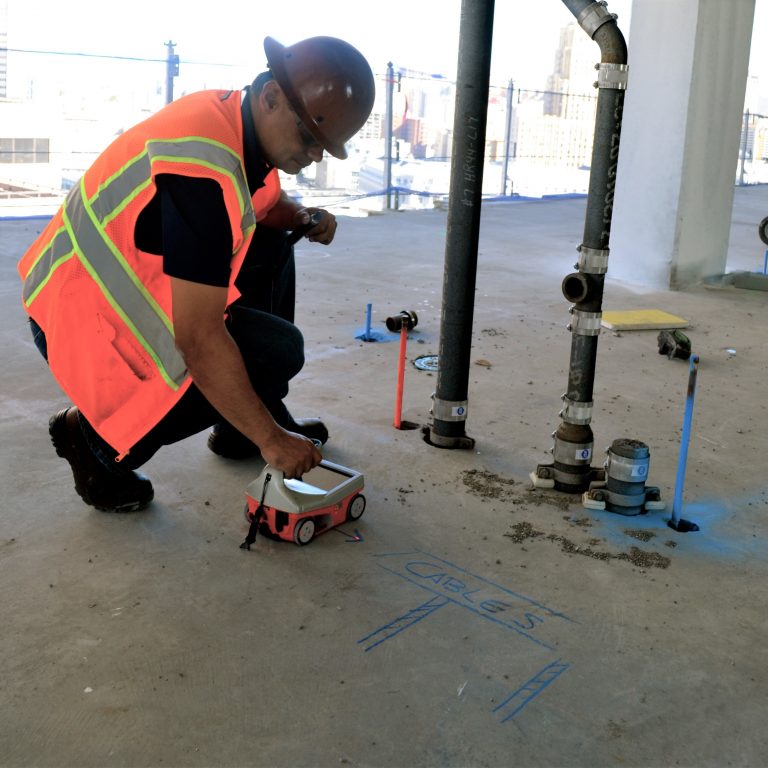Discover RainierGPR Service Areas for Dependable Concrete Scanning Solutions
Discover RainierGPR Service Areas for Dependable Concrete Scanning Solutions
Blog Article
Concrete Scanning: A Vital Action Towards Guaranteeing Structural Honesty and Safety And Security
In the realm of construction and framework upkeep, the importance of concrete scanning can not be overemphasized. By utilizing advanced modern technology and approaches, concrete scanning offers as a crucial tool in making certain that the stability and security of structures and bridges are upheld to the highest standards.
Significance of Concrete Scanning
Concrete scanning plays an essential duty in ensuring the architectural stability and safety of structures and facilities jobs. By using innovative modern technologies such as ground-penetrating radar (GPR) and electromagnetic induction, experts can non-destructively check concrete structures to spot possible defects, voids, embedded items, and reinforcement layout. This procedure allows very early detection of anomalies that could jeopardize the security of a framework, stopping costly problems and ensuring the security of passengers.
Concrete scanning is particularly essential during the preparation and building phases of a task. Before boring, cutting, or coring into concrete, scanning helps determine the exact areas of rebar, post-tension cables, and other embedded aspects, lowering the danger of unintentional hits that might result in architectural weaknesses. Additionally, concrete scanning help in quality assurance by confirming the thickness of concrete covers and identifying any type of disparities that might influence the total sturdiness of the structure. Inevitably, investing in concrete scanning services is not only an aggressive action to mitigate risks but also a fundamental action towards preserving the long-term security and security of buildings and framework.
Innovation for Concrete Evaluation

Benefits of Early Detection
Timely discovery of architectural problems can dramatically minimize risks and guarantee the durability of building jobs. By determining possible troubles at an early stage in the building and construction procedure, stakeholders can take aggressive steps to resolve concerns prior to they rise right into larger and much more expensive problems. One of the vital benefits of early detection is the avoidance of architectural failings, which can present significant safety and security dangers and cause job delays and monetary losses.
Furthermore, early discovery enables for timely repairs and maintenance, which can aid expand the life expectancy of the structure. By addressing concerns without delay, building teams can stay clear of costly repair work and even the need for early replacement of architectural elements. This proactive strategy not only conserves time and money but additionally enhances the total security and toughness of the building and construction project.
In addition, very early detection can enhance project planning and decision-making by supplying stakeholders with valuable understandings into the problem of the framework. Armed with this info, task managers can make enlightened selections concerning building and construction products, approaches, and timelines, leading to much more effective and efficient job end results.
Guaranteeing Structural Security
Ensuring the structural security of a building and construction project is critical to its security and long life. Structural stability refers to the capability of a structure or infrastructure to maintain its type and feature under various tons and ecological problems. To achieve this, extensive evaluation and surveillance of the framework are essential. Concrete scanning plays a vital duty in ensuring structural stability by finding prospective issues such as voids, delamination, or reinforcement rust that might jeopardize the stability of the structure gradually.
By making use of innovative scanning innovations like ground-penetrating radar (GPR) and electro-magnetic induction, building specialists can non-invasively check concrete click here now structures to identify locations of issue underneath the surface area. This positive method enables the early discovery of weaknesses or problems, making it possible for punctual repair work or reinforcement to stop structural failings.
Routine concrete scanning during various building phases and throughout the life process of a structure can aid preserve its stability, mitigate risks, and make certain the security of occupants. By focusing on structural stability via concrete scanning, building tasks can improve their strength and durability, inevitably adding to better security and long life.
Stopping Important Failures
Applying routine assessments, such as concrete scanning, can disclose surprise defects like voids, fractures, or deterioration that can compromise the integrity of a structure. By using innovative scanning innovations like Ground Penetrating Radar (GPR) or Concrete X-ray, designers can non-destructively assess the condition of concrete and determine weak points that need reinforcement or repair work.

Conclusion
To conclude, concrete scanning plays a vital duty in ensuring structural integrity and safety and security by making use of innovative technology for early detection of potential concerns. This aggressive approach helps avoid crucial failures and ensures the security of frameworks. It is click reference important to prioritize concrete examination as a typical technique to secure the long life and safety and security of structures and infrastructure.
Concrete scanning plays an essential role in making certain the structural integrity and safety and security of structures and infrastructure tasks. Furthermore, concrete scanning help in quality control by validating the thickness of concrete covers and spotting any kind of inconsistencies that might influence the general durability of the framework. Concrete scanning plays an important role in making sure structural security by discovering potential problems such as voids, delamination, or support deterioration that could endanger the integrity of the framework over time.

In final thought, concrete scanning plays an essential duty in making certain architectural stability and security by making use of innovative modern technology for very early discovery of prospective issues.
Report this page